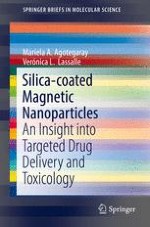This brief offers a comprehensive discussion of magnetic targeted drug delivery of silica-coated nanodevices. Focusing on the latest trend in pharmaceutical applications of these nanodevices, a multidisciplinary overview is displayed, from synthesis and design to pharmacokenetics, biodistribution and toxicology.
Chapters include design of silica-coated magnetic nanodevices; techniques for drug loading with features applicable to biological systems; synthesis, characterization and the assessment of biomedical issues with both in vitro and in vivo experiments. Applications in the treatment of different localized diseases are also addressed in order to present the potential use of these nanosystems as global, commercially available therapeutics.
